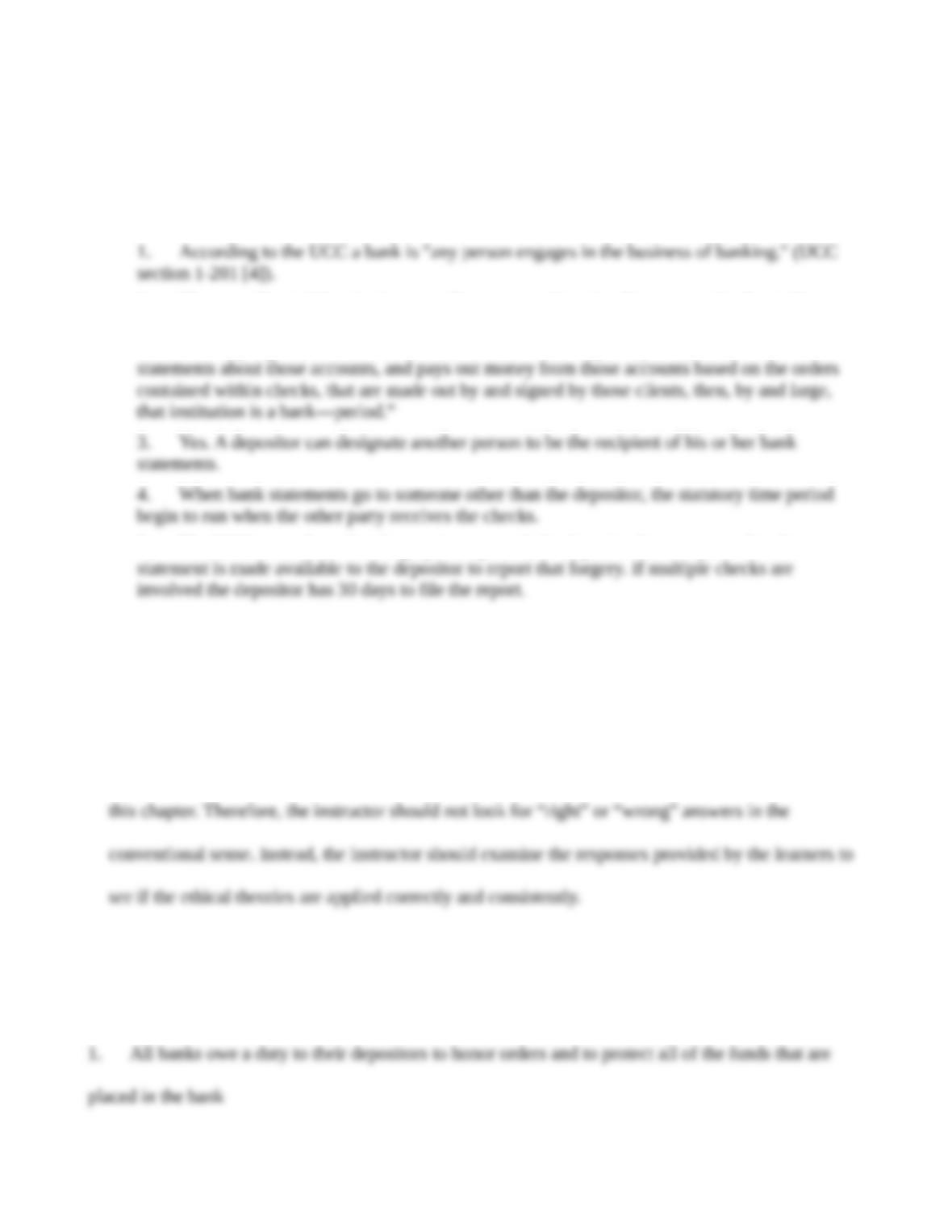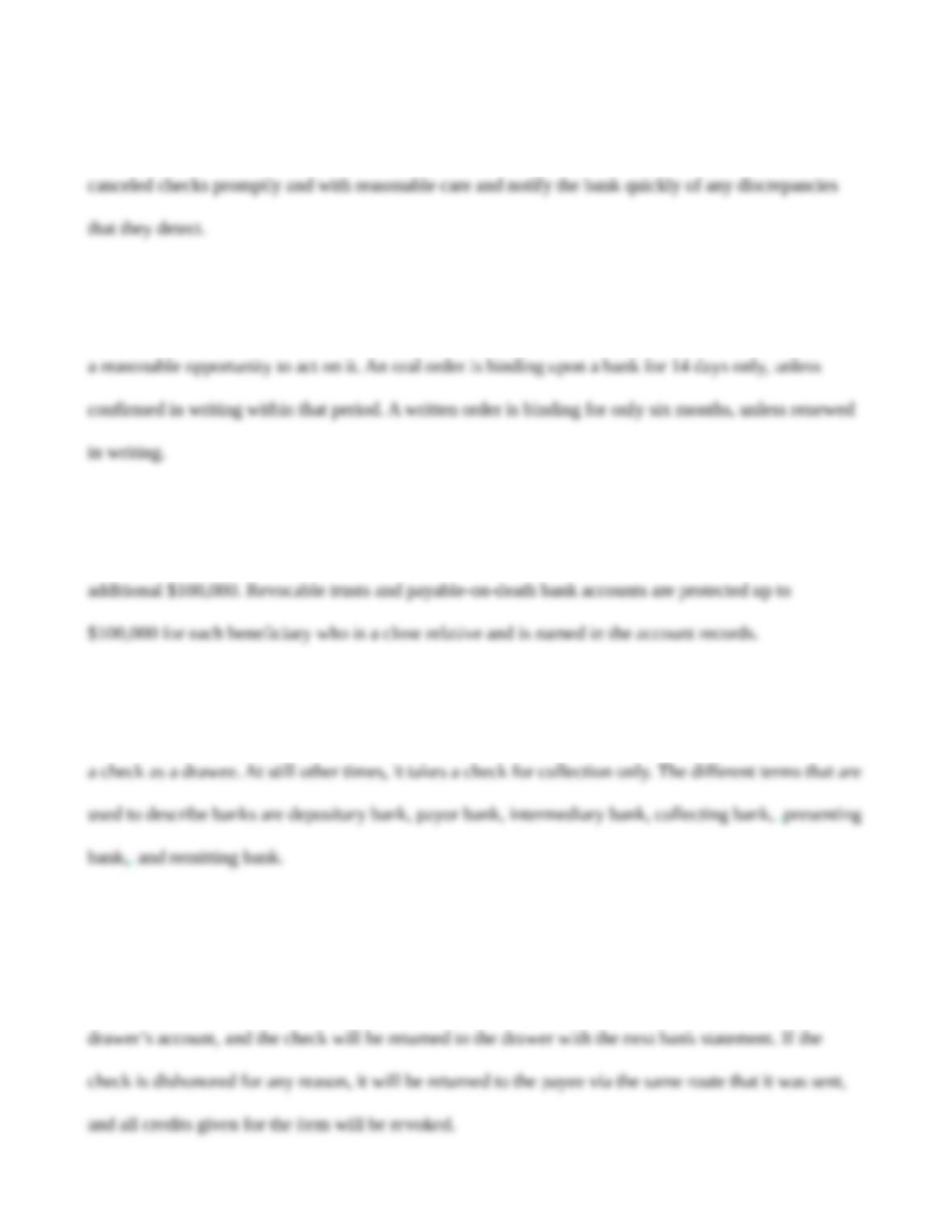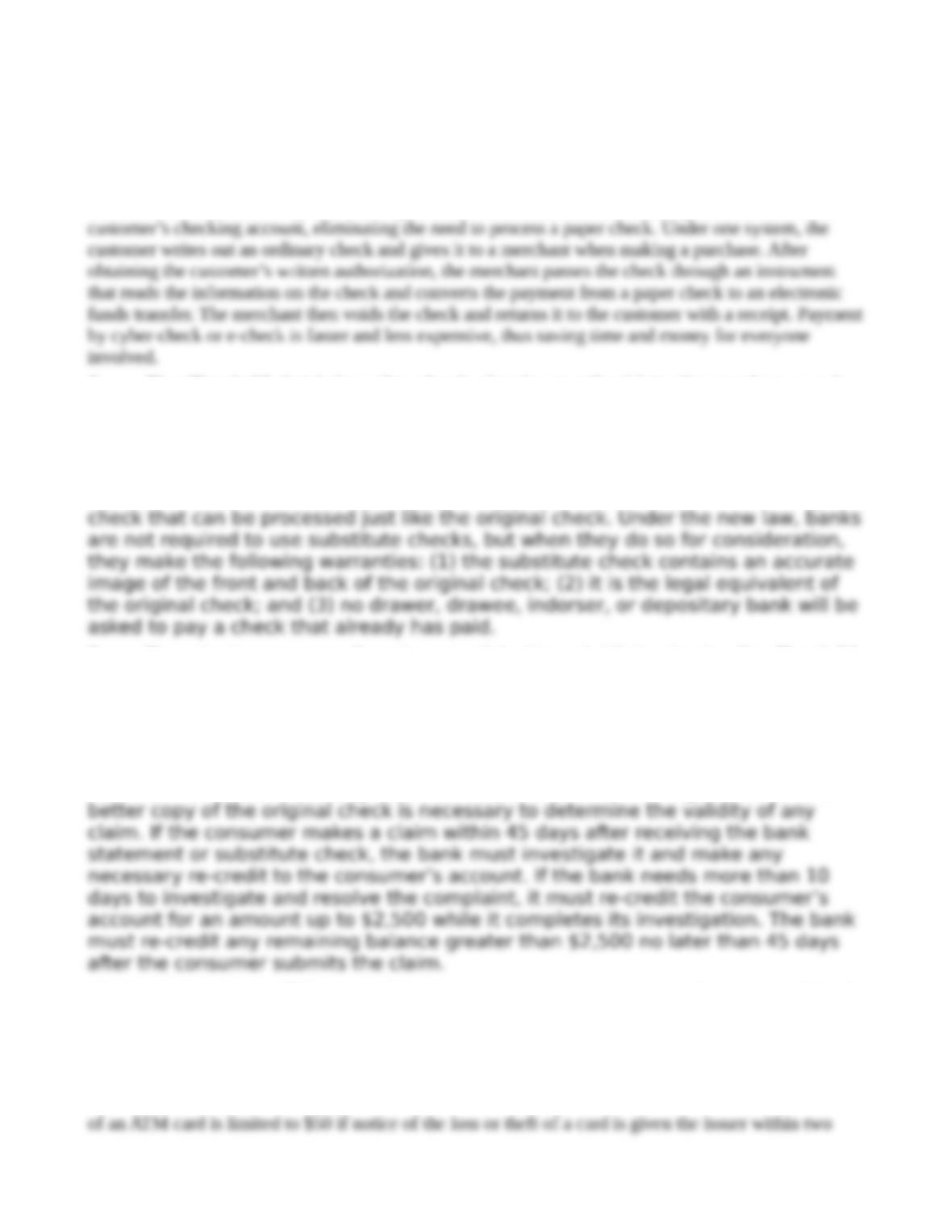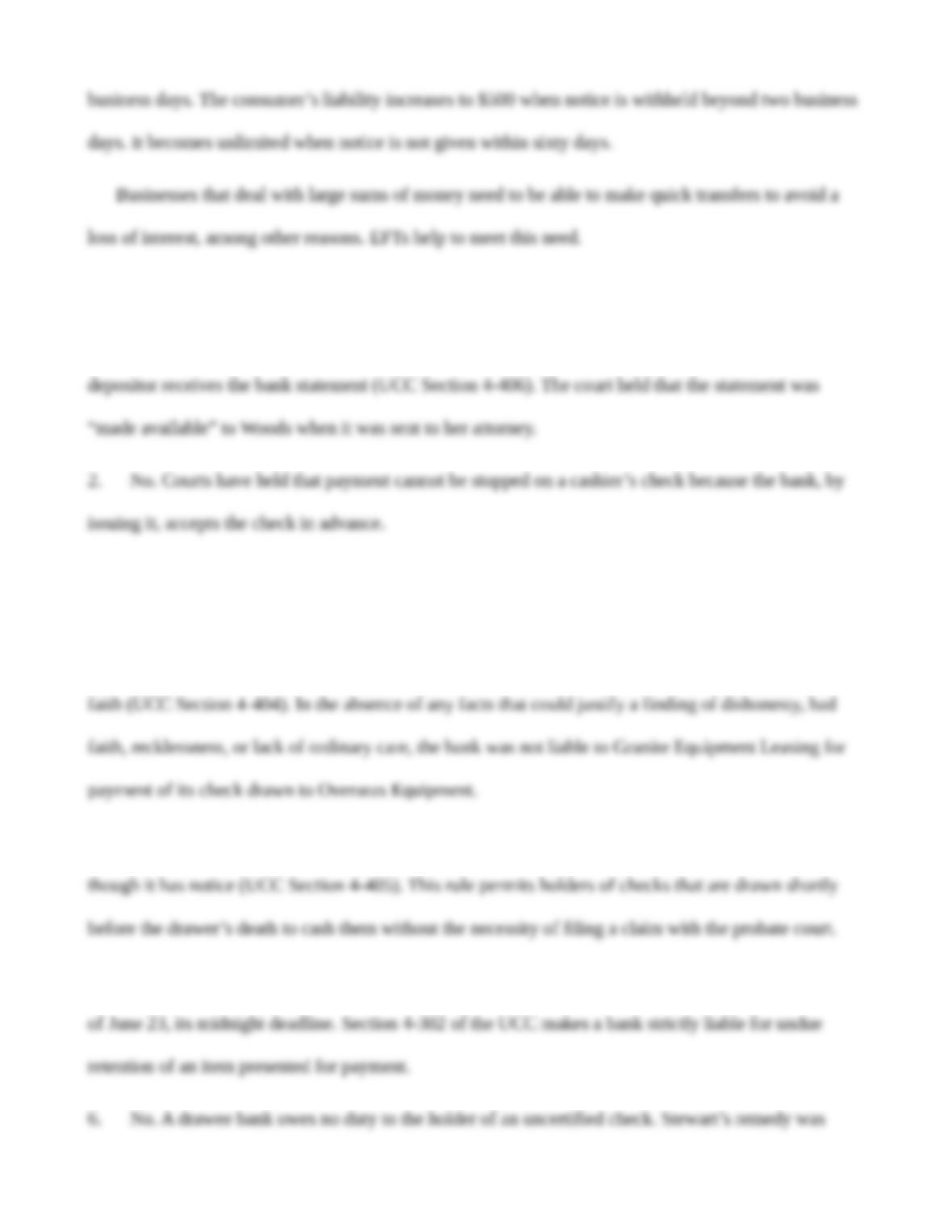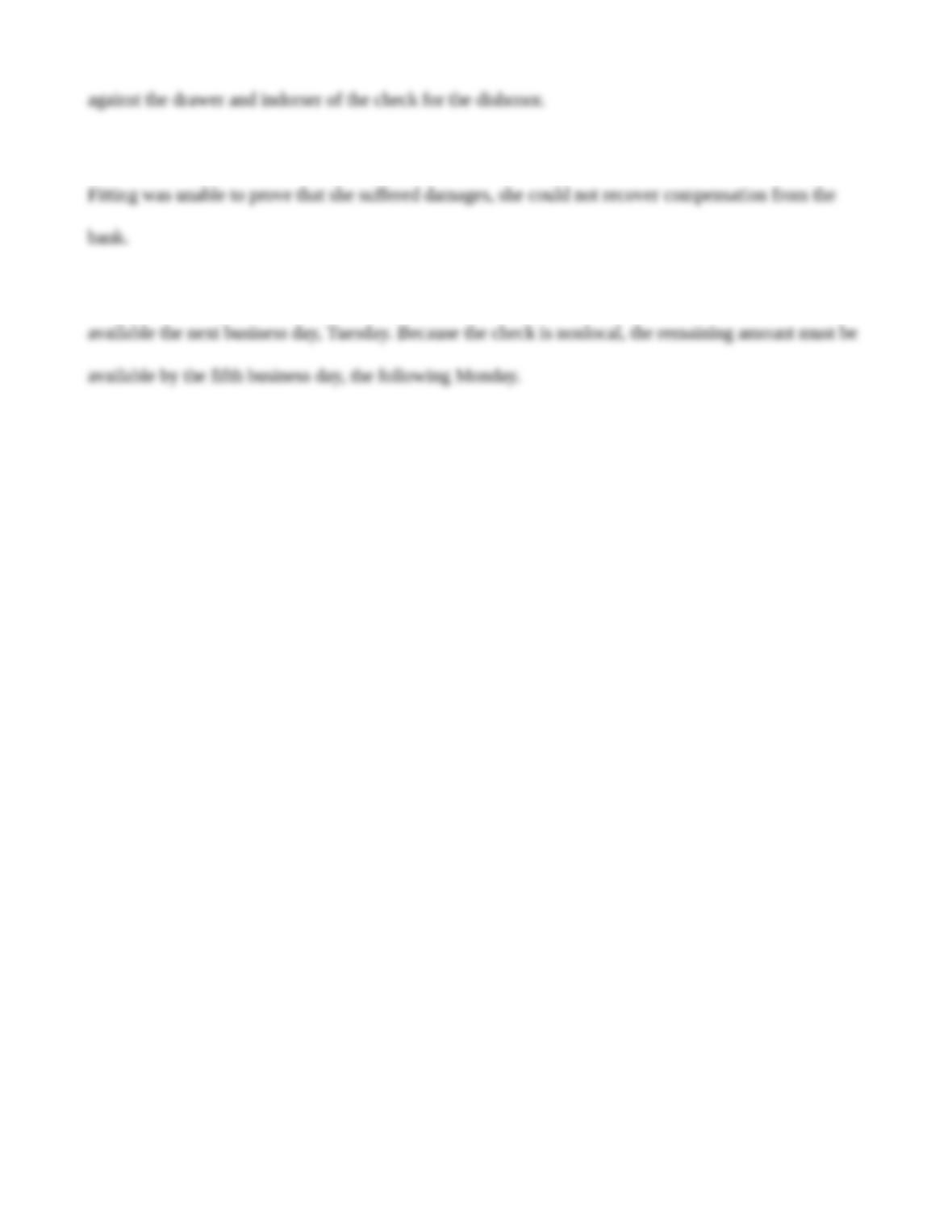7. Electronic banking (also called electronic fund transfers or EFTs) uses computers and electronic
technology as a substitute for checks and other banking methods. People can go to automatic teller
machines (ATMs) 24 hours a day to make bank deposits and withdrawals. They can pay bills by phone,
have deposits made directly to their bank accounts, and pay for retail purchases directly from their bank
accounts. Some banks have arrangements for payment by cyber-check, e-check (sometimes called
electronic check conversion), which is a system in which funds are electronically transferred from a
8. The Check 21 Act brings the check-clearing method into the modern age by
the use of electronic check processing. Such processing could not be done prior to
this 2004 law, because of the legal requirement that original checks be presented
to the drawee bank for payment. Under this law, a new negotiable instrument
called a substitute check is used. A substitute check (also called an image
replacement document or IRD) is a paper reproduction of both sides of an original
9. To protect consumers from losses related to substitute checks, the Check 21
Act includes a consumer’s right to claim an expedited credit. This right exists if
the consumer asserts in good faith the following four facts: (1) The bank charged
the consumer’s account for a substitute check that was given to the consumer. (2)
Either the check was not properly charged to the consumer’s account, or the
consumer has a warranty claim with respect to the substitute check. (3) The
consumer su3ered a resulting loss. (4) The production of the original check or a
10. Consumers who use ATMs are entitled to receive a written receipt whenever they use a machine. In
addition, the transaction must appear on the periodic statement sent to the consumer. Banks must
promptly investigate errors pointed out by consumers. A consumer’s liability for the unauthorized use
